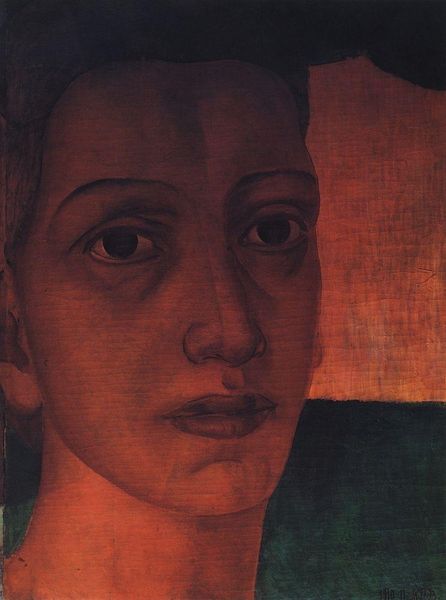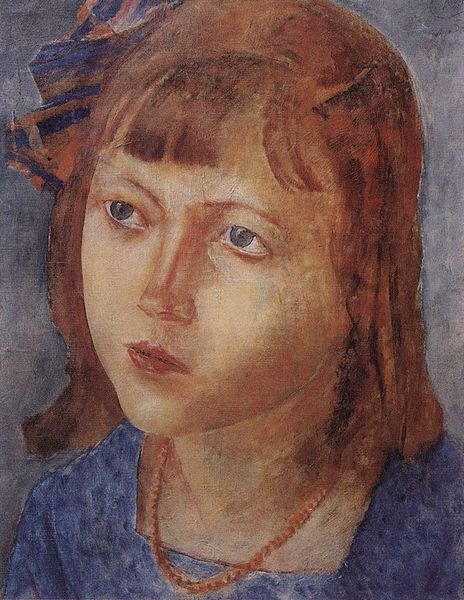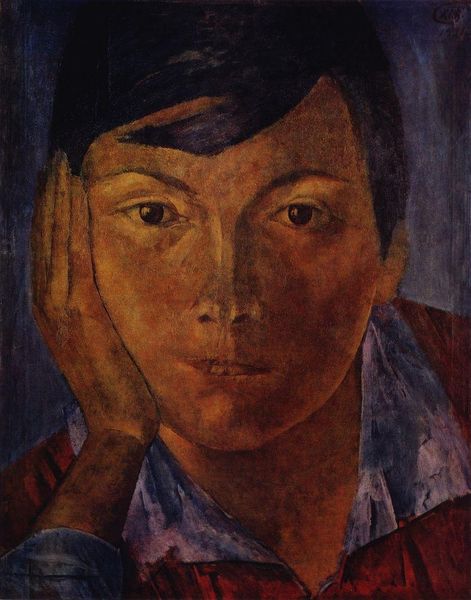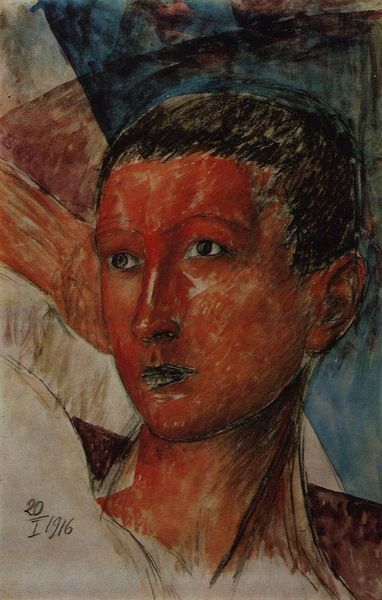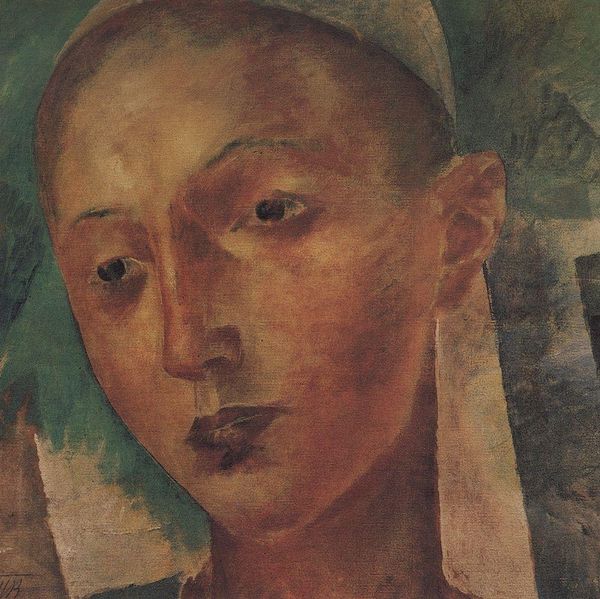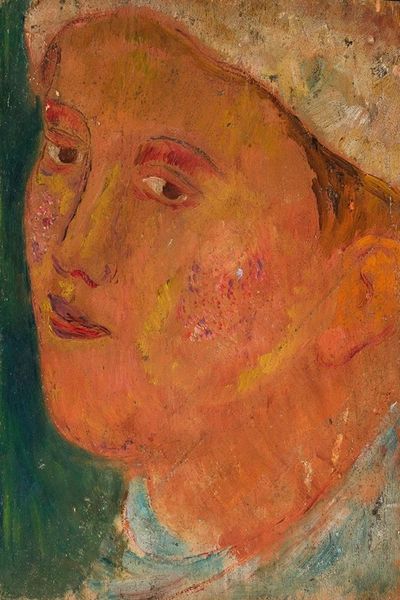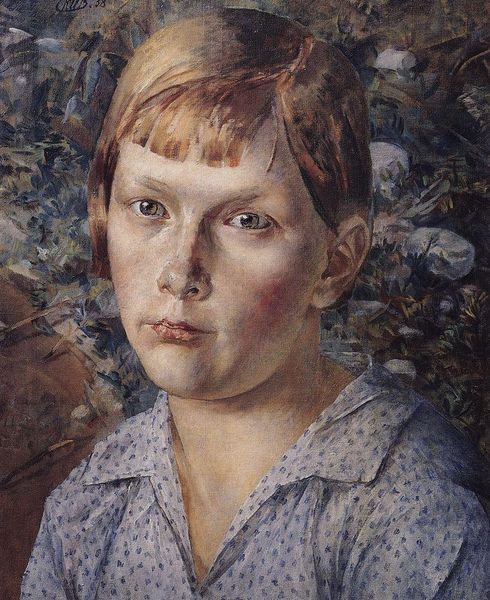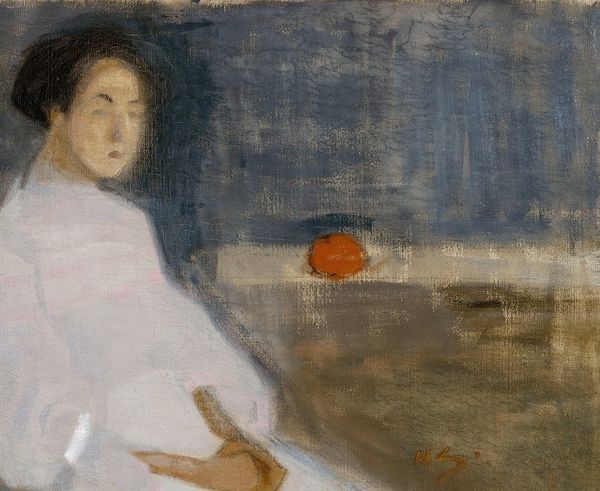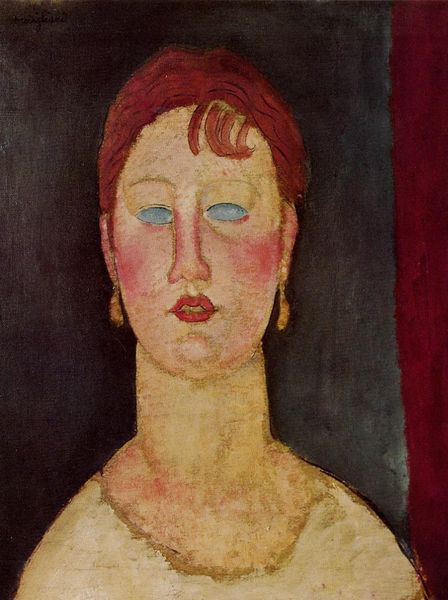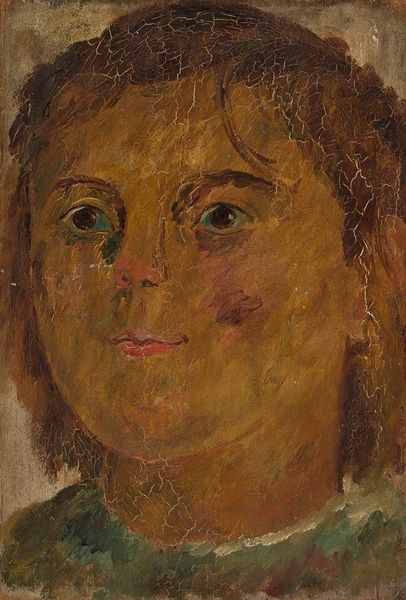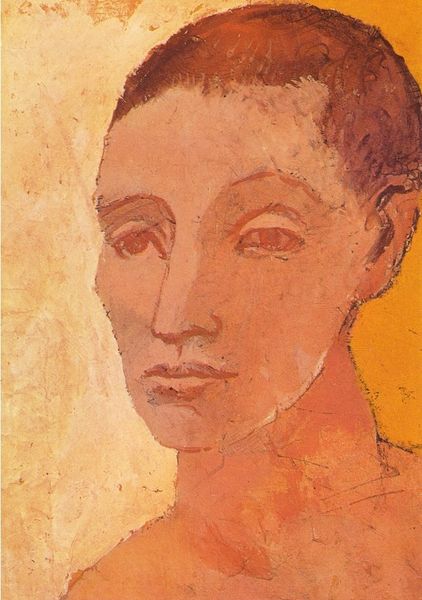
painting, oil-paint
#
portrait
#
narrative-art
#
painting
#
oil-paint
#
figuration
#
oil painting
#
expressionism
#
russian-avant-garde
Copyright: Public domain
Editor: Here we have Kuzma Petrov-Vodkin’s "Portrait of the daughter against the backdrop of still-life," painted in 1930, using oil on canvas. It’s a somewhat muted piece, dominated by a solemn-faced girl, and offset by a starkly simple still life in the upper right. I’m curious – what stories do you think it tells? Curator: This piece speaks volumes about the constrained lives of women, particularly girls, in Soviet Russia. Notice the palette – almost mournful. And consider the positioning; she is framed not by landscapes of potential, but by objects representing domesticity: food on a plate. The egg, the tomato, all suggestive of the limited roles available. Don’t you find it almost claustrophobic? Editor: Yes, definitely a feeling of constraint! So the choice of these specific items in the still life seems very intentional? Curator: Absolutely. Think of the power structures implied here. Who gets to define her narrative? Is it Petrov-Vodkin, as a male artist, imposing his vision, or is there a silent resistance in her gaze? Her direct stare feels like a challenge, doesn’t it? Editor: I hadn’t considered the aspect of the male gaze in relation to Soviet ideals! It definitely provides another layer to interpreting her expression. Thank you! Curator: Exactly! This painting provides the entry points to discuss gender roles, familial expectations, and subtle forms of resistance during that era. I see now that looking closely at how women are represented allows for reinterpretation. Editor: I am happy to have asked! I’m going to carry all of that into how I look at the piece and discuss it with others.
Comments
No comments
Be the first to comment and join the conversation on the ultimate creative platform.


